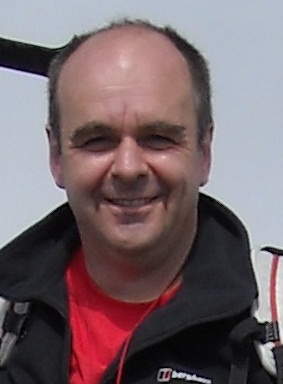
The Masters can be completed in one year full-time and two years part-time.
All courses are obligatory except for the choices available in the Specialized Translation module.
Part-time students should complete the Work Placement and Masters Thesis in their second year.
Click on the links below for more information about each course.
|
MODULE |
COURSE |
ECTS |
|||
|
3 |
|||||
|
3 |
|||||
|
Translation strategies and problem resolution (English-Spanish) |
3 |
||||
|
Translation strategies and problem resolution (Spanish-English) |
3 |
||||
|
3 |
|||||
|
3 |
|||||
|
3 |
|||||
|
3 |
|||||
|
Scientific and technical translation (Not offered in 2023-24) |
6 |
||||
|
6 |
|||||
| Literary translation | 6 | ||||
| Work placement |
6 |
||||
| Masters thesis | 18 | |
|||
| TOTAL ECTS CREDITS | 60 | ||||
MODULE: PROFESSIONAL TRANSLATION
This module comprises two courses that are taught by professional translators working in the local and regional translation market, with added content and updates from the Catalan Association of Professional Translators. The courses deal with all aspects of professional work as a translator and the setting up of companies.
Courses:
The course deals with professional ethics, different work arrangements and environments, and the types of contracts used in professional translating, with an emphasis on the uses and limits of Spain’s current laws on intellectual property. By the end of the course the student will have: 1) a practical understanding of current employment situations for translators, 2) skills in the preparation and negotiation of contracts, and 3) awareness of the legal framework governing the employment of translators in Spain.
Translation business management
The course provides guidelines and skills for the setting up and running of a translation business, either as a freelancer, a cooperative or a company. Attention is paid to financing opportunities and government aids. By the end of the course the student will have: 1) skills in the preparation of quotes, invoices, financial statements and tax returns, 2) awareness of the financing and funding possibilities available to translators, and 3) practical knowledge of the regulations governing the setting up of the main kinds of translation businesses.
MODULE: TRANSLATION STRATEGIES AND PROBLEM RESOLUTION
This module comprises two courses: one from Spanish to English, the other from English to Spanish. By the end of the course, students will be able to: 1) solve pair-specific problems in sentence construction, pragmatics, discourse development, textual and cultural differences, 2) apply a wide range of general solution types to deal with lexical gaps and the use of explicitation, implicitation, addition and omission, and 3) avoid false friends and the most frequent translation mistakes in either direction.
MODULE: TRANSLATION TECHNOLOGIES
This module offers a hands-on practical introduction to the main current translation technologies, especially translation memory suites, integrated machine translation, generative AI, and subtitling tools.
Courses:
Tools for specialized translation
This course deals with a wide range of translation technologies, with a special emphasis on translation memories that have integrated machine-translation feeds. A survey is made of tools available for tasks including time management, revision aids, and specific tools for terminology management, project management, and speech recognition. Generative AI is integrated as a general proble-solving tool. Students are encouraged to do group work locating, using and evaluating recently released tools. By the end of the course the student will be able to: 1) use at least three translation-memory suites with integrated machine-translation feeds, 2) pick up and use a new translation memory suite within two hours, 3) apply basic post-editing techniques and reflect on the specificities of post-editing with respect to general translation revision, 4) construct terminology databases and transfer them from one translation memory system to another, and 5) evaluate the usefulness of a range of translation technologies.
Subtitling tools
This course presents the theory and practice of subtitling, giving students group work on the subtitling of audiovisual content from and into Spanish. By the end of the course, the student will be able to: 1) identify and correct defective subtitling, 2) apply efficient text compression techniques when appropriate, and 3) understand the classical rules of subtitling, including the norms operative in Spanish television and cinema, and the ways in which they are being challenged by new audiovisual practices.
MODULE: REVISING, EDITING, AND POST-EDITING
This module comprises two courses: one from Spanish into English, and the other from English into Spanish. It responds to the heightened need for revision brought about by the use of current translation technologies. It builds on the introduction to post-editing given in the course on translation technologies. It also incorporates enhanced awareness of client needs, developed in the parallel courses in practical translation. By the end of the course, the student will have: 1) a thorough understanding of the modes of revision, editing and post-editing, 2) awareness of when they should be used and to what extent, 3) skills in the efficient application of degrees of revision, editing and post-editing, 4) comparison with the economies of pre-editing, and 5) modes of payment for revising, editing and post-editing.
MODULE: SPECIALIZED TRANSLATION
Students must choose two of the three available courses, all of which work in both directions within the same class space:
Scientific and technical translation
The course deals with specialized texts, most of them written by academic experts in our departments of anthropology, law and engineering, where the authors can be called upon for specialized advice. Students are also invited to nominate their own fields of specialization. Translations are done both into Spanish and from Spanish and must be carried out in small teams using a translation memory suite. Attention is given to specialized terminology management as well as the various user requirements and appropriate levels of reading difficulty. By the end of the course the student will be able to: 1) locate and manage the specialized information needed to solve translation problems, 2) consult with specialists and clients in order to gain specialize field knowledge, 3) develop, manage and transfer termbases, 4) adjust specialized language to different readership requirements, and54) work in small teams to translate large specialized documents efficiently.
Legal and financial translation
This course is taught in two parts. Both parts go into and from Spanish in the same class space They require translations to be completed in small teams using a translation memory suite with transferable memories and glossaries.
The part on legal translation deals both with the problems of translating legal texts and the regulations and norms governing sworn translation (and interpreting) in Spain. A wide range of Common Law and Civil Law texts are dealt with, including contracts, affidavits, judicial sentences, commercial documents, power of attorney), as well as documents requiring sworn translation (academic transcripts, birth certificates, and so on).
The part on financial translation deals with company financial statements, balance sheets, stock market reports, and similar document requiring not just the use of specialized terminology but also the ability to understand and render metaphorical language.
In both parts, particular emphasis is given to the building and management of translation memories and glossaries. By the end of the course the student will be able to: 1) identify and solve the main problems of translating legal and financial documents, 2) understand the laws and regulations governing sworn translation in Spain, 3) develop, manage and transfer advanced term bases.
This course deals with the specific problems of literary translation, working both into and from Spanish. Students are encouraged to work in teams with complementary language skills, discussing problems as they go. Students are encouraged to propose texts to be translated, although particular attention is paid to the rendition of verse form, the treatment of Spanish sentence length, the key role of genre in negotiating translation solutions, and the wider cultural theories of translation that can inform decisions on the level of audience design and aesthetic expectations. By the end of the course the student will be able to: 1) translate literary prose into their L1, 2) understand the possibilities and problems of verse translation between Spanish and English, and 3) understand and be able to discuss general principles concerning how translation can affect the development of languages and cultures.
MODULE: WORK PLACEMENT
The work placement enables students to gain professional experience in one of the companies that work with the Master's. Students are also able to arrange placement agreements with companies of their own choice, both in Spain and abroad, on the condition that suitable feedback can be provided on the student's activities.
MODULE: MASTERS THESIS
The Master's thesis is a project that simulates real-world work conditions in the carrying out and management of translations, linguistic consulting or revision and postediting. Students work individually or in small teams, under the supervision of a member of the teaching staff. The staff post jobs and students have to bid for them.
The completed work should comprise some 10,000 words, 50 minutes of audiovisual material, or the equivalent of five days of full-time work.

"I signed up for the course at the URV to retrain as a professional translator, and was very pleased with it. As well as a wide-ranging introduction to all sorts of theoretical and practical aspects of the job, it brought me some useful contacts and - most importantly - gave me the confidence to make the move into freelance translating."
MIKE HOLT, Traduccions Priorat SCP

"I suppose my what I got out of the Masters in Tarragona is a bit unusual: it was a starting point of my career in computational linguistics. I learned about the importance of automatic text processing techniques for real-world translation and localization, which led first to a technical job in industry, and eventually to my current research position in academia."
Grzegorz Chrupała, Associate Professor in Computational Linguistics, Tilburg University, Netherlands
